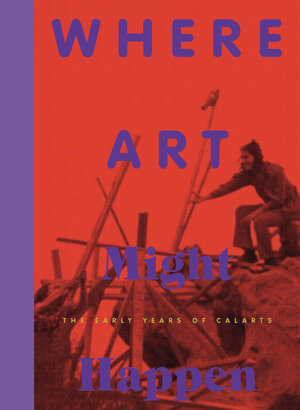Where Art Might Happen (engl./dt.)
The Early Years of CalArts
herausgegeben von Christina Végh und Philipp KaiserFrom Fluxus to conceptualism and feminism, an inside look at how California’s legendary school nurtured a generation of exciting, experimental artists.
Founded in 1970 by Walt Disney, CalArts was envisioned as a place where students could exchange ideas and learn multiple means of self-expression along the lines of the Bauhaus School and Black Mountain College. Disney’s original impetus was to revive the moribund field of animation; he likely never dreamed that the school would become a trailblazing educational model. This multifaceted exhibition catalog focuses on the school’s early years as it brings together for the first time the parallel development of the Conceptual Art, feminism, and Fluxus movements. Chronologically arranged, the catalog traces how CalArts created fertile ground for situations in which, as founding teacher John Baldessari put it, “art can happen.” It follows the institutional establishment of Baldessari’s “Post-Studio” course and Miriam Schapiro and Judy Chicago’s Feminist Art Program. It explores the school’s unique pedagogy, which placed students and teachers on equal footing, and illustrates how the school reflected social issues of the time by challenging authority and patriarchal power structures. Over one hundred works—many never before published—from forty-one artists, along with several enlightening oral history interviews with CalArts protagonists, edited by Verena Kittel, capture a unique and important moment in American arts education. Edited by Christina Végh and Philipp Kaiser, with contributions by Géraldine Gourbe, Thomas Lawson, Annette Jael Lehmann, Glenn Phillips, Christian Rattemeyer, and Janet Sarbanes
Ausstattung: mit Poster
Founded in 1970 by Walt Disney, CalArts was envisioned as a place where students could exchange ideas and learn multiple means of self-expression along the lines of the Bauhaus School and Black Mountain College. Disney’s original impetus was to revive the moribund field of animation; he likely never dreamed that the school would become a trailblazing educational model. This multifaceted exhibition catalog focuses on the school’s early years as it brings together for the first time the parallel development of the Conceptual Art, feminism, and Fluxus movements. Chronologically arranged, the catalog traces how CalArts created fertile ground for situations in which, as founding teacher John Baldessari put it, “art can happen.” It follows the institutional establishment of Baldessari’s “Post-Studio” course and Miriam Schapiro and Judy Chicago’s Feminist Art Program. It explores the school’s unique pedagogy, which placed students and teachers on equal footing, and illustrates how the school reflected social issues of the time by challenging authority and patriarchal power structures. Over one hundred works—many never before published—from forty-one artists, along with several enlightening oral history interviews with CalArts protagonists, edited by Verena Kittel, capture a unique and important moment in American arts education. Edited by Christina Végh and Philipp Kaiser, with contributions by Géraldine Gourbe, Thomas Lawson, Annette Jael Lehmann, Glenn Phillips, Christian Rattemeyer, and Janet Sarbanes
Ausstattung: mit Poster











